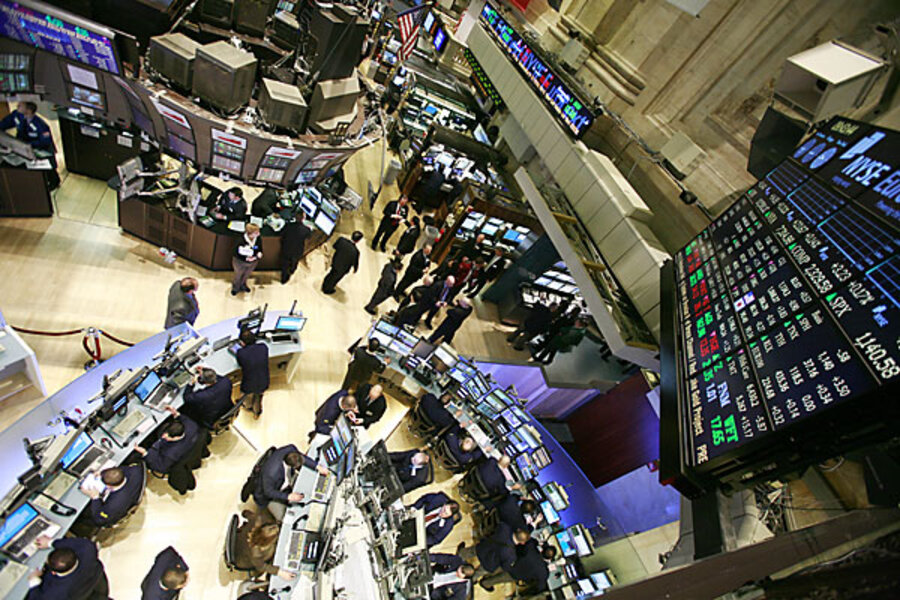Stock market trading: Computers: 1 Investors: 0
Loading...
A microsecond – a millionth of a second – is all it takes superfast computers to trade New York Stock Exchange-listed stocks on any of nine stock exchanges.
Such high-frequency trading is more than a technological curiosity. It has become so widespread within the past decade that it represents perhaps half of all stock trades in the United States. That has enormous implications for investors.
Among them:
•Stock markets are operating increasingly like a casino, says economist Harald Malmgren, who researched the topic with Mark Stys, chief investment officer of Bluemont Capital Advisors. The two co-wrote an article for The International Economy, a quarterly journal. In a phone interview, Mr. Malmgren likens computerized traders to operators of slot machines where the profit on one machine is small, but the return on a battery of machines is handsome.
Traditional value investing, by contrast, where brokerage analysts and others study a company's sales, profits, debts, etc., has become almost "irrelevant," says Malmgren. "That whole concept of buy-and-hold ... stocks is marginalized."
•Regular buyers and sellers of stock and exchange-traded mutual funds are losing billions of dollars in value, teeny bit by teeny bit, as the computerized traders take advantage of the slightest spreads in buy-sell prices on an individual stock market or between markets.
To a degree, high-frequency trading adds to market "liquidity," that is, its ability to accept buy-and-sell orders quickly. It also adds to its "efficiency," which reduces the cost of trades. But what investors gain in efficiency they could more than lose in profits.
•Though computerized trading is not illegal, it has opened the door to more market manipulation, figures Malmgren. The exchanges and the Securities and Exchange Commission do not have the high-powered computers and expertise necessary to detect such manipulative techniques as pushing prices up or down with a rush of orders. "Humans can't keep track," says Malmgren.
•The stock market has become more subject to "systemic risk" – the danger of sudden dramatic drops in prices. Malmgren blames the "flash crash" of May 5 on high-frequency trading. Several computerized traders disengaged from the market, leading to an implosion in liquidity – no market for sales. The Dow Jones Industrial Average took a brief plunge of 998 points that day, losing about $1 trillion in value. It regained 543 points of that loss in about 90 seconds.
Malmgren suspects a similar market meltdown will occur in the future, if nothing is done to remedy the perils of high-frequency trading.
One possibility would be a tiny tax on each trade. This would make high-frequency trading more expensive. Orders are usually "immediate or cancel orders" that take less than a second to complete. The tax revenues, Malmgren figures, could be used to improve the capacity of regulators – or help reduce the federal deficit.
But the globalization of stock trading complicates that solution. If high-frequency traders can't operate in the US, more of the business is likely to move overseas.
Another technique would be to require high-frequency traders to make a market at all times, similar to the requirement for "specialists" on the Big Board. In other words, they would have to be willing to buy specific stocks even when prices are falling. The rule would be "if you play, you must stay," says Malmgren.
•David R. Francis writes a weekly column.





